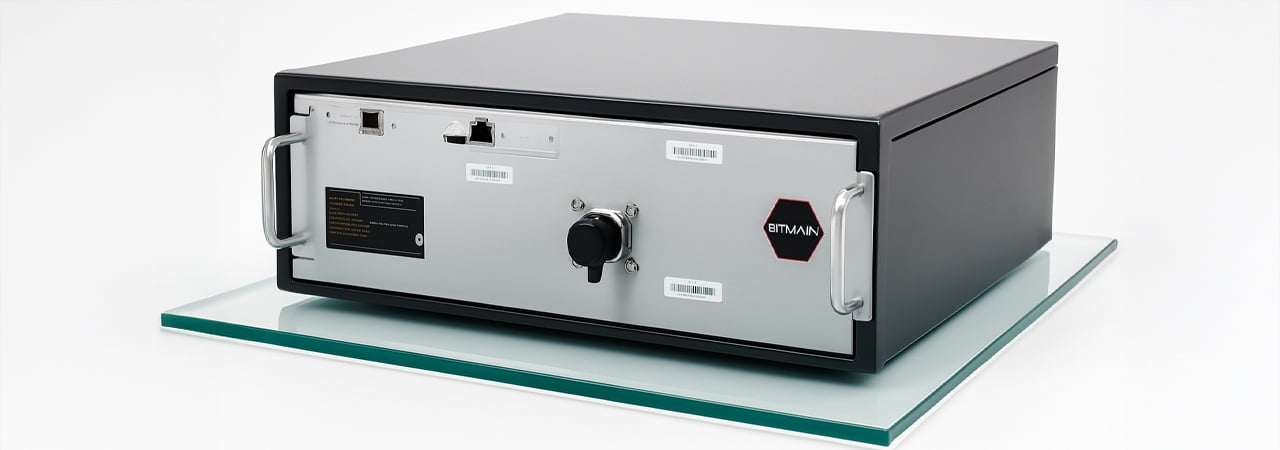As March 2025 draws to a close, Bitcoin’s total hashrate recently tapped its all-time peak at 862 exahash per second (EH/s), and it’s currently hovering at 853 EH/s. While BTC prices have climbed over 26% since the halving, miners are earning considerably less than before the event.
However, for companies equipped with the latest generation of application-specific integrated circuit (ASIC) machines, the advancements in technology have provided a significant advantage. Today’s top mining hardware now operates within a hashrate spectrum stretching from 400 terahash per second (TH/s) to 860 TH/s.

Bitmain’s Antminer S21e XP Hydro 3U machine.
At the forefront of this category is Bitmain’s Antminer S21e XP Hydro 3U unit, which peaks at 860 TH/s. While a system like the Hydro 3U—drawing 11,180 watts (W)—might initially seem less efficient than alternatives consuming between 5,500 W and 7,500 W, the integration of direct liquid-to-chip (DLC) cooling technology alters the calculus.
Traditional air-cooled setups pale in comparison to DLC’s precision, as the latter directly targets thermal output at the source. This innovation ensures sustained peak performance levels, even during prolonged high-intensity operations, by circumventing the limitations of ambient airflow.
While the machine flaunts 860 TH/s, it maintains an energy efficiency ratio of 13 joules per terahash (J/T). Unquestionably, liquid-cooled systems—be they immersion or hydro-powered—have emerged as the undisputed sovereigns in this thermal arms race, eclipsing antiquated airflow-reliant rivals.
Securing the runner-up title is Auradine’s U.S.-engineered AH3880 hydro-cooled unit. When activated in ‘turbo mode,’ this liquid-chilled ASIC achieves 600 TH/s at 16.5 J/T. Under ‘normal mode,’ the AH3880 hums along at 450 TH/s while sipping power at a frugal 14.5 J/T.
Completing the trifecta is Bitmain’s Antminer S21 XP+ Hydro, generating 500 TH/s. This ASIC consumes 5,500 W of power yet operates with a lean energy efficiency profile of roughly 11 J/T. The Bitmain unit accommodates multiple cooling fluid options, such as antifreeze, purified H₂O, and deionized water.
Bitdeer manufactures a hydro-cooled ASIC that generates approximately 500 TH/s with an energy efficiency of 14.9 joules per terahash (J/T). The 7,450-watt (W) unit called the Sealminer A2 Pro Hydro, released this month, operates at this performance level.
Separately, in fifth place in terms of terahash output, Microbt’s Whatsminer M66S++ ASIC produces 348 TH/s under standard conditions. Overclocking can increase its output to 400–430 TH/s. The hydro-powered device consumes 5,394 W and maintains an efficiency of 15.5 J/T.
Though legacy air-cooled miners retain a prevailing foothold in the sector—with manufacturers continuing to roll out advanced air-cooled iterations—their operational metrics pale in comparison to liquid-cooled thermal titans, which dwarf the capabilities of airflow-dependent peers.
These modern marvels also operate at quieter decibel levels, a stark contrast to the cacophonous drone of traditional units, prompting some firms to migrate to liquid-cooled fleets to sidestep acoustic grievances. Conversely, liquid-cooled systems bear a premium price tag, and their deployment demands substantial upfront investment in specialized infrastructure.
免责声明:本文章仅代表作者个人观点,不代表本平台的立场和观点。本文章仅供信息分享,不构成对任何人的任何投资建议。用户与作者之间的任何争议,与本平台无关。如网页中刊载的文章或图片涉及侵权,请提供相关的权利证明和身份证明发送邮件到support@aicoin.com,本平台相关工作人员将会进行核查。




